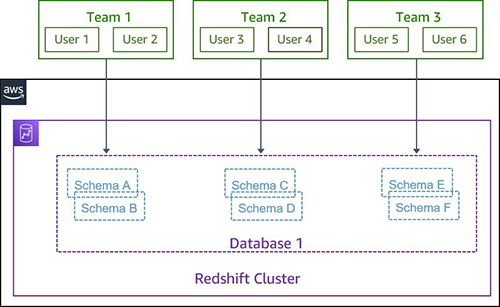AWS Big Data Blog
Category: Amazon Redshift
Accelerate your data warehouse migration to Amazon Redshift – Part 4
This is the fourth in a series of posts. We’re excited to share dozens of new features to automate your schema conversion; preserve your investment in existing scripts, reports, and applications; accelerate query performance; and potentially reduce your overall cost to migrate to Amazon Redshift. Check out the previous posts in this series: Accelerate your […]
Accelerate your data warehouse migration to Amazon Redshift – Part 3
This is the third post in a multi-part series. We’re excited to share dozens of new features to automate your schema conversion; preserve your investment in existing scripts, reports, and applications; accelerate query performance; and reduce your overall cost to migrate to Amazon Redshift. Check out all the posts in this series: Accelerate your data […]
How Rapid7 built multi-tenant analytics with Amazon Redshift using near-real-time datasets
February 9, 2024: Amazon Kinesis Data Firehose has been renamed to Amazon Data Firehose. Read the AWS What’s New post to learn more. This is a guest post co-written by Rahul Monga, Principal Software Engineer at Rapid7. Rapid7 InsightVM is a vulnerability assessment and management product that provides visibility into the risks present across an […]
Analyze daily trading activity using transaction data from Amazon Redshift in Amazon FinSpace
Financial services organizations use data from various sources to discover new insights and improve trading decisions. Finding the right dataset and getting access to the data can frequently be a time-consuming process. For example, to analyze daily trading activity, analysts need to find a list of available databases and tables, identify its owner’s contact information, […]
Federated authentication to Amazon Redshift using AWS Single Sign-On
July 2023: This post was reviewed for accuracy. Managing database users through identity federation allows you to manage authentication and authorization procedures centrally. Amazon Redshift, a fast, fully managed cloud data warehouse, provides browser-based plugins for JDBC/ODBC drivers, which helps you easily implement identity federation capabilities added with multi-factor authentication (MFA) to secure your data […]
How to attribute Amazon Redshift costs to your end-users
Amazon Redshift is a fast, fully managed cloud data warehouse that makes it simple and cost-effective to analyze all your data using standard SQL and your existing business intelligence (BI) tools. In this two-part series, we discuss how to attribute Amazon Redshift costs at the user and group level. When using Amazon Redshift, you can […]
Get started with the Amazon Redshift Data API
June 2023: This post was reviewed and updated for accuracy. The GitHub repository mentioned in this post is now updated with examples for serverless. Amazon Redshift is a fast, scalable, secure, and fully managed cloud data warehouse that enables you to analyze your data at scale. Tens of thousands of customers use Amazon Redshift to […]
How Tophatter improved stability and lowered costs by migrating to Amazon Redshift RA3
This is a guest post co-written by Julien DeFrance of Tophatter and Jordan Myers of Etleap. Tophatter is a mobile discovery marketplace that hosts live auctions for products spanning every major category. Etleap, an AWS Advanced Tier Data & Analytics partner, is an extract, transform, load, and transform (ETLT) service built for AWS. As a […]
How MEDHOST’s cardiac risk prediction successfully leveraged AWS analytic services
February 9, 2024: Amazon Kinesis Data Firehose has been renamed to Amazon Data Firehose. Read the AWS What’s New post to learn more. MEDHOST has been providing products and services to healthcare facilities of all types and sizes for over 35 years. Today, more than 1,000 healthcare facilities are partnering with MEDHOST and enhancing their […]
How Magellan Rx Management used Amazon Redshift ML to predict drug therapeutic conditions
This post is co-written with Karim Prasla and Deepti Bhanti from Magellan Rx Management as the lead authors. Amazon Redshift ML makes it easy for data scientists, data analysts, and database developers to create, train, and use machine learning (ML) models using familiar SQL commands in Amazon Redshift data warehouses. The ML feature can be […]








